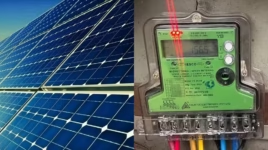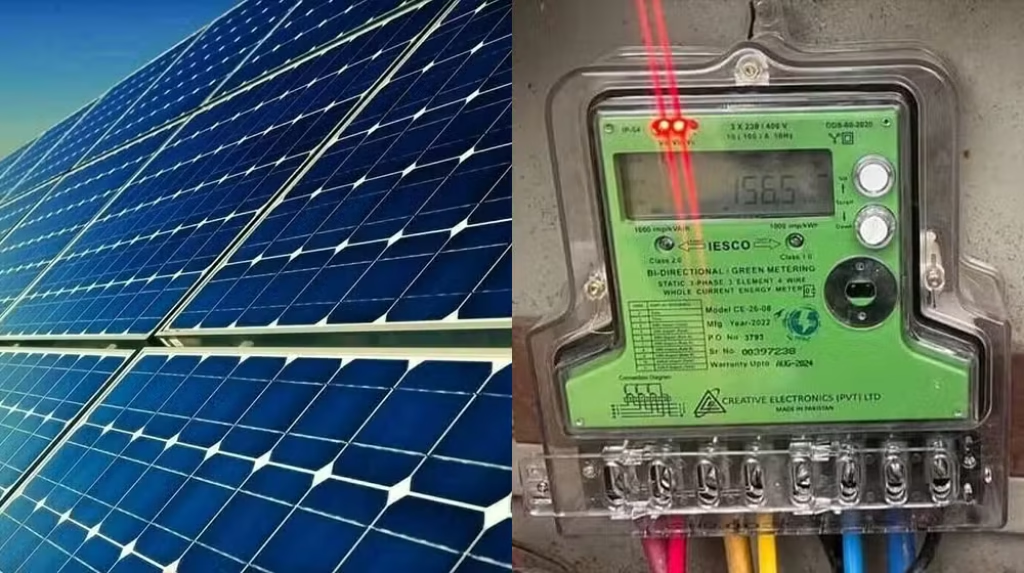
Government Limits Net Metering Contracts: What You Need to Know

Government Limits Net Metering Contracts: What You Need to Know
In a significant policy shift, the government has introduced new regulations limiting net metering contracts to five years. This decision, which directly impacts consumers with solar energy systems, also includes a reduction in the buyback rate for surplus electricity to Rs. 10 per unit. The move is seen as a response to rising electricity tariffs, shifting financial burdens, and the need for better regulation of the net metering system.
What Is Net Metering and How Does It Work?
Net metering is a billing mechanism that allows consumers with solar panels or other renewable energy systems to sell surplus electricity back to the grid. Consumers are credited for the electricity they export to the grid, which offsets their electricity consumption. In the past, the buyback rate for surplus electricity was set at Rs. 27 per unit, which helped incentivize the installation of renewable energy systems.
However, the government’s recent decision to revise this rate, combined with a host of new regulations, marks a significant change for the renewable energy market.
The Key Changes to Net Metering Regulations
- Limitation on Net Metering Contracts
The government has decided to limit net metering contracts to a five-year period. This means that consumers who are currently enrolled in net metering programs will need to renew or renegotiate their contracts after five years, potentially at different terms and conditions. - Reduction in Buyback Rate for Surplus Electricity
One of the most notable changes is the reduction in the buyback rate for surplus electricity from Rs. 27 per unit to Rs. 10 per unit. This move follows criticism from net metering consumers, many of whom have voiced concerns over the financial implications of this drastic reduction. - Periodic Revisions to Buyback Rates
The buyback rate will be subject to periodic revisions based on the National Average Power Purchase Price. This means that the rate may change in the future depending on how electricity costs fluctuate over time. - Hosting Capacity Limits
Distribution companies are required to conduct studies within the next six months to determine the hosting capacity limits for each transformer and feeder. This will help set limits on how much renewable energy can be added to the grid in different regions. - Updated Inverter Standards
The revised framework also includes updated standards for inverters used by net metering consumers. New consumers will be required to install inverters that comply with grid interaction features, remote monitoring, and anti-islanding protection, which will enhance the safety and reliability of the grid. - Limits on Net Metering Capacity
Under the new regulations, the net metering capacity cannot exceed a consumer’s sanctioned load. If the exported electricity exceeds 10 percent of this limit, surplus units will not be credited. This rule aims to ensure that consumers are not over-generating electricity relative to their consumption.
Why These Changes Matter for Net Metering Consumers
The new regulations have raised concerns among many consumers who rely on net metering for financial savings and sustainability. With the reduction in the buyback rate and the limitation on contract durations, many worry that the incentive to invest in solar power systems may diminish.
However, the government argues that the changes are necessary to address the financial burden of rising electricity tariffs. In FY24, net metering systems contributed to a reduction of 3.2 billion kWh in electricity sales. This, in turn, shifted a financial burden of Rs. 101 billion onto other consumers, raising tariffs by Rs. 0.9 per unit.
The Financial Impact on Consumers and the Energy Sector
The financial impact of these changes is expected to grow significantly in the coming years. By FY34, the projected sales reduction due to net metering systems is expected to reach 18.8 billion kWh, resulting in an additional financial burden of Rs. 545 billion. This would increase electricity tariffs by Rs. 3.6 per unit, further exacerbating the challenge of rising energy costs.
The government’s decision to revise the buyback rate is aimed at reducing this financial burden and stabilizing electricity prices for all consumers, including those who rely on traditional power generation methods.
What Does This Mean for the Future of Renewable Energy in Pakistan?
The government’s new regulations may have a mixed impact on the future of renewable energy in Pakistan. On the one hand, the reduction in the buyback rate and the limitation on contract durations could discourage new investments in renewable energy systems. On the other hand, the updated inverter standards and the focus on grid stability may contribute to the overall reliability of the energy sector, which is crucial for long-term sustainability.
What Should Net Metering Consumers Do?
Consumers who are already enrolled in net metering contracts or are considering installing renewable energy systems should stay informed about these new regulations. Here are some steps to consider:
- Review Your Contract
If you are currently enrolled in a net metering program, review the terms of your contract. Be aware of the five-year limit and the potential need to renegotiate the terms in the future. - Understand the Buyback Rate Changes
Be prepared for a reduction in the buyback rate from Rs. 27 per unit to Rs. 10 per unit. This change will impact the financial savings you can expect from your renewable energy system. - Check for Inverter Compliance
If you are installing a new system, ensure that the inverter meets the updated grid interaction standards. This will ensure that your system is compliant with the new regulations and can interact safely with the grid. - Consider Future Financial Implications
Be mindful of the long-term financial implications of these changes. While the reduction in buyback rates may diminish immediate returns, investing in renewable energy remains a sustainable choice for many consumers, especially when considering long-term energy savings and environmental benefits.
Conclusion: A Step Toward Stabilizing the Energy Sector
The government’s decision to limit net metering contracts and revise the buyback rate for surplus electricity reflects the need to balance the growth of renewable energy with the financial stability of the electricity sector. While these changes may have short-term drawbacks for net metering consumers, they are part of a broader strategy to ensure the sustainability of the energy sector in Pakistan.
As the energy landscape continues to evolve, consumers, policymakers, and energy companies must work together to find solutions that promote both the adoption of renewable energy and the financial health of the electricity grid.
Stay informed about the latest developments in the energy sector and ensure that your renewable energy systems remain compliant with the new regulations. The future of energy in Pakistan depends on smart, sustainable policies that benefit all consumers.


